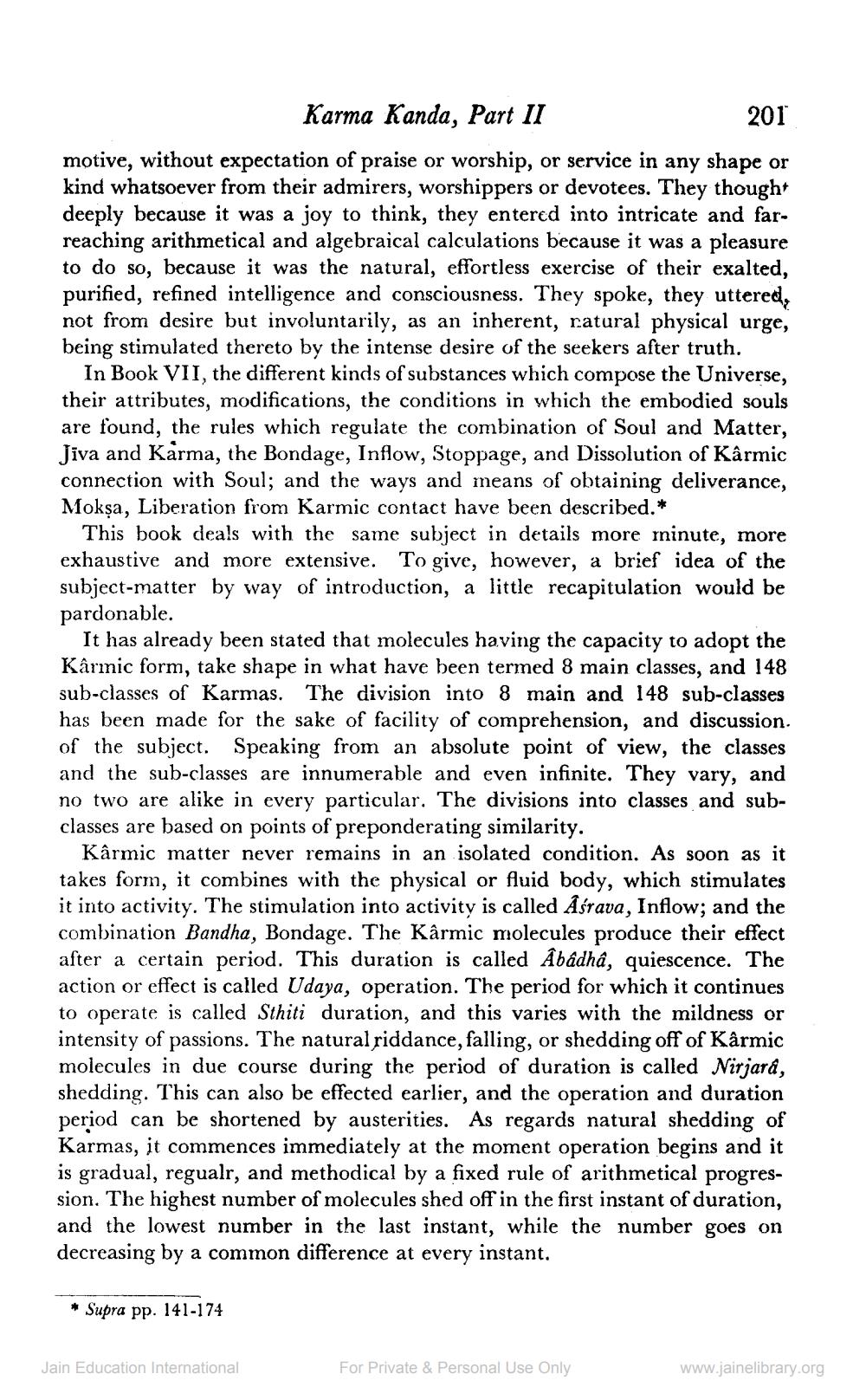________________
Karma Kanda, Part II
201 motive, without expectation of praise or worship, or service in any shape or kind whatsoever from their admirers, worshippers or devotees. They thought deeply because it was a joy to think, they entered into intricate and farreaching arithmetical and algebraical calculations because it was a pleasure to do so, because it was the natural, effortless exercise of their exalted, purified, refined intelligence and consciousness. They spoke, they uttered, not from desire but involuntarily, as an inherent, natural physical urge, being stimulated thereto by the intense desire of the seekers after truth.
In Book VII, the different kinds of substances which compose the Universe, their attributes, modifications, the conditions in which the embodied souls are found, the rules which regulate the combination of Soul and Matter, Jiva and Karma, the Bondage, Inflow, Stoppage, and Dissolution of Kârmic connection with Soul; and the ways and means of obtaining deliverance, Mokşa, Liberation from Karmic contact have been described.*
This book deals with the same subject in details more minute, more exhaustive and more extensive. To give, however, a brief idea of the subject-matter by way of introduction, a little recapitulation would be pardonable.
It has already been stated that molecules having the capacity to adopt the Kârmic form, take shape in what have been termed 8 main classes, and 148 sub-classes of Karmas. The division into 8 main and 148 sub-classes has been made for the sake of facility of comprehension, and discussion. of the subject. Speaking from an absolute point of view, the classes and the sub-classes are innumerable and even infinite. They vary, and no two are alike in every particular. The divisions into classes and subclasses are based on points of preponderating similarity.
Kârmic matter never remains in an isolated condition. As soon as it takes form, it combines with the physical or fluid body, which stimulates it into activity. The stimulation into activity is called Âśrava, Inflow; and the combination Bandha, Bondage. The Kârmic molecules produce their effect after a certain period. This duration is called Âbâdhâ, quiescence. The action or effect is called Udaya, operation. The period for which it continues to operate is called Sthiti duration, and this varies with the mildness or intensity of passions. The natural riddance, falling, or shedding off of Kârmic molecules in due course during the period of duration is called Nirjarâ, shedding. This can also be effected earlier, and the operation and duration period can be shortened by austerities. As regards natural shedding of Karmas, it commences immediately at the moment operation begins and it is gradual, regualr, and methodical by a fixed rule of arithmetical progression. The highest number of molecules shed off in the first instant of duration, and the lowest number in the last instant, while the number goes on decreasing by a common difference at every instant.
Supra pp. 141-174
Jain Education International
For Private & Personal Use Only
www.jainelibrary.org




